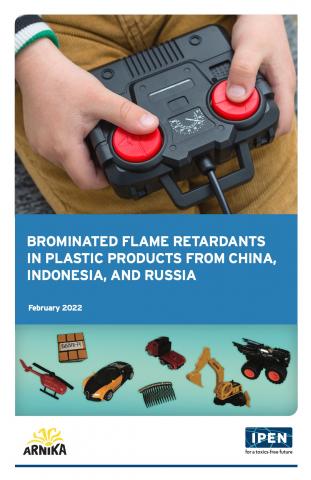Brominated Flame Retardants in Plastic Products from China, Indonesia, and Russia

Brominated flame retardants (BFRs) are man-made chemicals that are regularly added to consumer products to reduce fire-related injury and damage. The massive production and use of BFRs was initiated as a response to frequent fires started by cigarettes in the 1970s. This solution focused on chemical fire retardants, rather than measures to increase fire safety of cigarettes and led to the development of related fire safety standards focused on chemical fire retardance. Since the 1970s, brominated flame retardants have been used in consumer products such as electronics, furniture and car upholstery, matrasses, household textiles and building insulation.
This study aimed to determine whether children’s toys, hair accessories, office supplies and kitchen utensils, sold on Chinese, Indonesian and Russian markets contained BFRs. This would indicate use of recycled, flame-retardant-containing plastics, similar to observations in previous studies.
All three countries are facing waste management challenges, at the local and national levels. One of many reasons is plastic waste imports with unknown chemical content. The data collected in this study will therefore generate information that can contribute to the setting of appropriate standards and to improve the control over circulation of harmful BFRs in plastic consumer products and waste.
